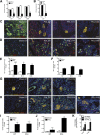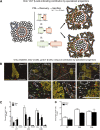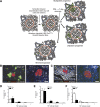β-Cells are not generated in pancreatic duct ligation-induced injury in adult mice
- PMID: 23349489
- PMCID: PMC3636617
- DOI: 10.2337/db12-0848
β-Cells are not generated in pancreatic duct ligation-induced injury in adult mice
Abstract
The existence of adult β-cell progenitors remains the most controversial developmental biology topic in diabetes research. It has been reported that β-cell progenitors can be activated by ductal ligation-induced injury of adult mouse pancreas and apparently act in a cell-autonomous manner to double the functional β-cell mass within a week by differentiation and proliferation. Here, we demonstrate that pancreatic duct ligation (PDL) does not activate progenitors to contribute to β-cell mass expansion. Rather, PDL stimulates massive pancreatic injury, which alters pancreatic composition and thus complicates accurate measurement of β-cell content via traditional morphometry methodologies that superficially sample the pancreas. To overcome this potential bias, we quantified β-cells from the entire pancreas and observed that β-cell mass and insulin content are totally unchanged by PDL-induced injury. Lineage-tracing studies using sequential administration of thymidine analogs, rat insulin 2 promoter-driven cre-lox, and low-frequency ubiquitous cre-lox reveal that PDL does not convert progenitors to the β-cell lineage. Thus, we conclude that β-cells are not generated in injured adult mouse pancreas.
Figures







References
-
- Desgraz R, Bonal C, Herrera PL. β-cell regeneration: the pancreatic intrinsic faculty. Trends Endocrinol Metab 2011;22:34–43 - PubMed
Publication types
MeSH terms
Substances
Grants and funding
LinkOut - more resources
Full Text Sources
Other Literature Sources
Molecular Biology Databases

